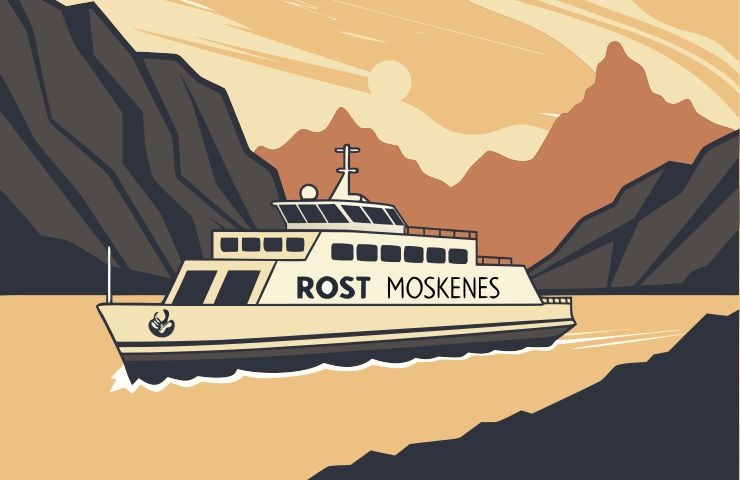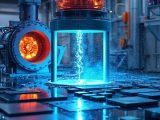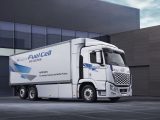
World’s Largest Hydrogen-Powered Ships to Sail Norway’s Iconic Bodø–Lofoten Route
October 9, 2025Buckle Up for Zero-Emission Ferries
Imagine gliding through Norway’s majestic fjords on the world’s largest zero-emission vessels, without a wisp of exhaust trailing behind. Well, pinch yourself—on January 1, 2026, RØST and MOSKENES will kick off service along the Bodø–Lofoten route, Norway’s longest ferry line. Each of these hydrogen-powered ships can haul 599 passengers and 120 cars, and together they’ll slice out a whopping 26,500 tonnes of CO₂ every year. This isn’t just a cool eco-toy—it’s the next chapter in sustainable transport.
These giants are built to break records. Designed by the experts at the Norwegian Ship Design Company, their hull shapes are optimized for smooth sailing and low energy use. Over at Myklebust Verft, the shipyard’s crafting the steel framework with precision and pride. From the moment the first beam is laid to the official roll-out, they’re flipping the script on marine decarbonization.
Why It Matters
Here’s the thing: shipping still pumps out a hefty chunk of global greenhouse gases, especially on busy coastal runs. That stretch of Nordland sees tourists flocking to chase the Northern Lights and snap picture-postcard peaks—and diesel-burners clash with that postcard-perfect vibe. By swapping out old-school engines for a green hydrogen ferry setup, we’re looking at cleaner air, quieter decks, and communities that actually breathe easier.
And it’s not just about fresh mountain air. Tour operators can hype up whisper-quiet crossings, hotels can boast a greener footprint, and local towns can shout from the rooftops about their eco creds. Even underwater, marine life gets a break—less engine roar means whales, seals and little fish can carry on without getting stressed. It’s a ripple effect of benefits that goes way beyond zero tailpipe emissions.
The Magic Ingredient
So, what’s behind this zero-emission marvel? It all comes down to hydrogen fuel cells. Think of them as onboard power stations: hydrogen meets oxygen, they react and voilà—electricity, a bit of heat and pure water, with no combustion or soot in sight. These cells run at ambient temperatures, pack a punch in efficiency, and can be swapped out in a flash if maintenance is needed. That reliability is gold when you’re crossing a 108-kilometer fjord in Arctic weather.
And because safety is always front and center, they’ve got backup from Bergen Engines running on Hydrotreated Vegetable Oil (HVO). Made from biomass via hydrotreating, HVO slides right into existing engines as a clean alternative to diesel. If hydrogen pressure dips or there’s a sudden power spike—like breaking through winter ice—those HVO gensets kick in without missing a beat.
Real-World Rollout
Picture yourself stepping onto the dock at Bodø harbour and boarding a sleek, silent deck for the run to Lofoten. Each day, RØST and MOSKENES will burn about five to six tonnes of hydrogen per crossing. That fuel comes straight from GreenH’s upgraded plant in Bodø, where renewable electricity splits water into green hydrogen through electrolysis.
To keep the gas flowing, GreenH has beefed up its site with bigger storage tanks and high-pressure pumps that funnel hydrogen directly into the ferries’ tanks. Crew members have practiced special bunkering routines, and local energy engineers are on call 24/7. With a solid agreement between the Norwegian Public Roads Administration and Torghatten Nord, schedules stay on point across the full 108-kilometer route.
Passengers will feel the difference the moment they step onboard: no diesel stench, no engine grumble—just smooth sailing, panoramic views, and that crisp Arctic breeze.
Behind the Scenes
This whole operation is powered by a dream team of partners:
- Torghatten Nord: Steering daily operations and overall vision.
- Myklebust Verft: Welding the hulls and perfecting the decks.
- Bergen Engines: Supplying HVO backup power for peace of mind.
- GreenH: Producing 100% green hydrogen right in Bodø.
- Norwegian Public Roads Administration: Securing contracts and supporting bunkering infrastructure.
From the get-go, public grants from regional development agencies helped soften the financial blow, while eager private investors jumped on board, betting on Norway’s future as a hydrogen hub. Along the way, hundreds of welders, technicians and engineers picked up real-world skills in hydrogen systems and HVO engines—talent that’ll stick around long after the launch.
Zooming Out
Stepping back, Norway has planted its flag as a leader in green hydrogen and marine decarbonization for years, pouring resources into electrolysis, fueling stations and pilot vessels. These ferries are more than a local win—they’re a rolling showcase for sustainable transport on the global stage. When the world watches two massive ships glide by with zero exhaust, other ports will want in on the action.
Investors around the globe could start lining up to fund hydrogen docks, bunkering networks and next-gen hydrogen fuel cells. If this blueprint scales to major coastal routes, inland waterways or even ocean-going vessels, we could witness a tidal shift in how goods and people move across water—and it all kicks off with these two ferries.
Beyond the Emissions
Sure, cutting 26,500 tonnes of CO₂ makes headlines, but there’s more under the surface:
- Hundreds of fresh jobs—from shipyard welders to hydrogen engineers.
- A boost to local green supply chains and service providers.
- A replicable model for ports around the world to upgrade their infrastructure.
- Healthier coastal communities with cleaner air and calmer seas.
Final Shot
This isn’t a minor tweak or a one-off pilot—it’s a full-scale reboot of marine transport, from hull design to power systems to fuel logistics. By showing that hydrogen-powered ships can tackle tough, high-frequency routes, Norway is proving that zero-emission shipping is no pipe dream—it’s here, bold and underway. Ready to reimagine maritime transport? All aboard the future of clean shipping!



 With over 15 years of reporting hydrogen news, we are your premier source for the latest updates and insights in hydrogen and renewable energy.
With over 15 years of reporting hydrogen news, we are your premier source for the latest updates and insights in hydrogen and renewable energy.